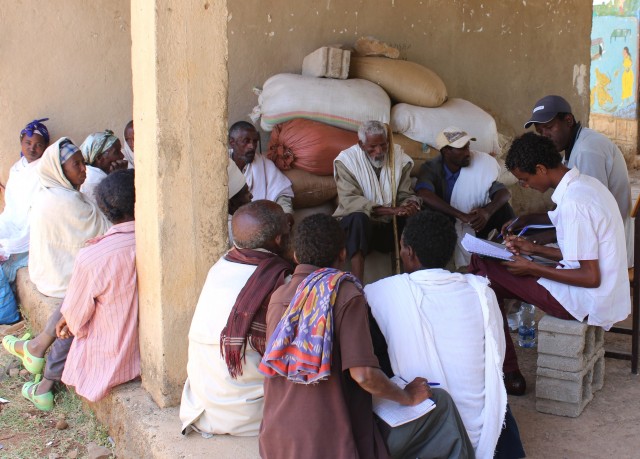
The household economy approach (HEA)
The Household Economy Approach (HEA) is a method for assessing groups of households’ vulnerabilities to economic shocks and changes over large rural areas, based on livelihood patterns and market information. It can be used to monitor food security and adaptation to climate change, and to inform relevant policy responses and initiatives.
The Household Economy Approach is based on data describing the economies and wealth distributions of households in rural livelihood zones of developing countries, with current and projected data on types and quantities of production (including crops, livestock and livestock products, wild foods and employment) and prices used to predict the impacts of drought and other changes on household incomes and welfare.
Adopted as a method of famine early-warning and routine food security assessment by many governments and humanitarian agencies across sub-Saharan Africa, HEA assessments can be used to simulate the impacts of economic shocks or changes (eg drought, floods, or disease in crops or animals) on access to food and basic non-food needs. This data can be used in the management of national food policy and in understanding the potential impacts of changes and trends, such as climate change, on different population groups and in different geographical areas.
However, it also has wider applications to the management of national food policy and (in conjunction with the individual household method) to understanding the potential impacts of climate change on different population groups.
Development of the HEA
The household economy approach has its origins in Amartya Sen’s theory of exchange entitlements, and was initially developed as an approach to famine prediction by EfDs co-founder and director of research, John Seaman, who led the team in Save the Children UK that developed and piloted the HEA over 20 years ago.
Since then, the HEA has been adopted as a method of famine early warning by many governments and humanitarian agencies across sub-Saharan Africa, as well as by the USAID Famine Early Warning Systems Network (FEWS NET). An EfD staff member was seconded to FEWS NET in Washington, D.C. from 2012-14 providing technical support to the programme, and EfD continues to extend and improve HEA methodology. We have increased the scope of HEA work through the ground-breaking development of advanced analytical HEA software (OHEA®).
How HEA works
In HEA studies the first step is to demarcate rural livelihood zones, based on land use, climate, rainfall, markets and other economic information. In each livelihood zone a ‘reference year’ (a recent year when conditions were neither exceptionally bad nor exceptionally good) is identified in consultation with local key informants, and a sample of locations is purposively selected to represent the range of variation across the zone. At each sample site, initial village interviews are conducted with knowledgeable village representatives to establish the characteristics of wealth groups that are recognised there.
Using this information, further interviews are conducted with a focus group selected from each wealth group (e.g. ‘very poor’, ‘poor’, ‘middle’, and ‘better-off’) to establish the incomes and expenditures of a ‘typical’ household in that wealth group in the reference year. These interviews are repeated at the selected sample sites across the zone, providing a baseline dataset which is used to simulate the impacts of economic shocks or changes on access to food and basic non-food needs for typical households from each wealth group.
Click here to read examples of studies and reports that use the household economy approach, or contact us for further information on the HEA.